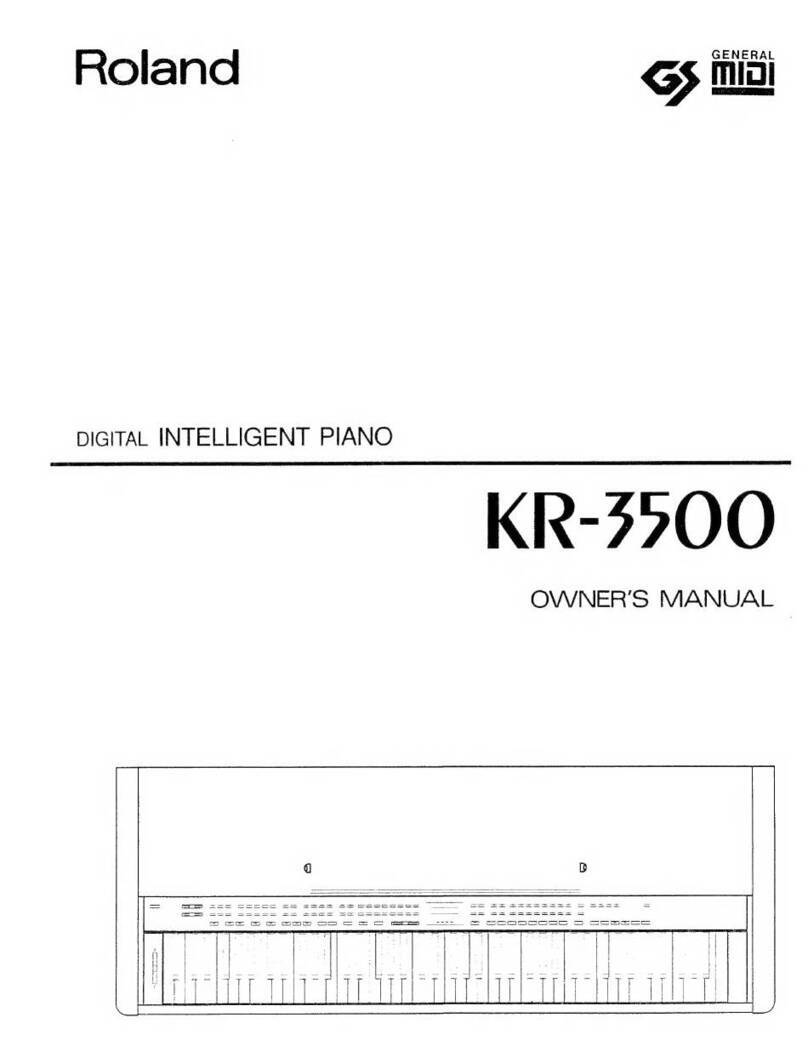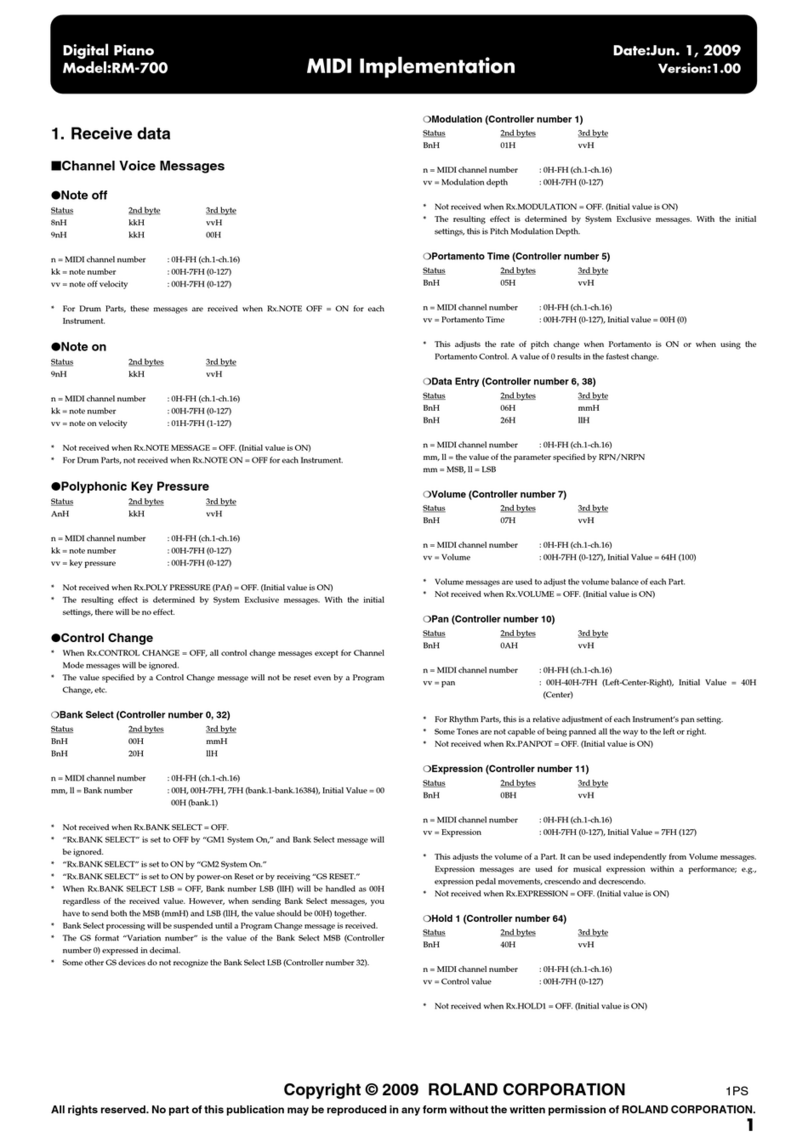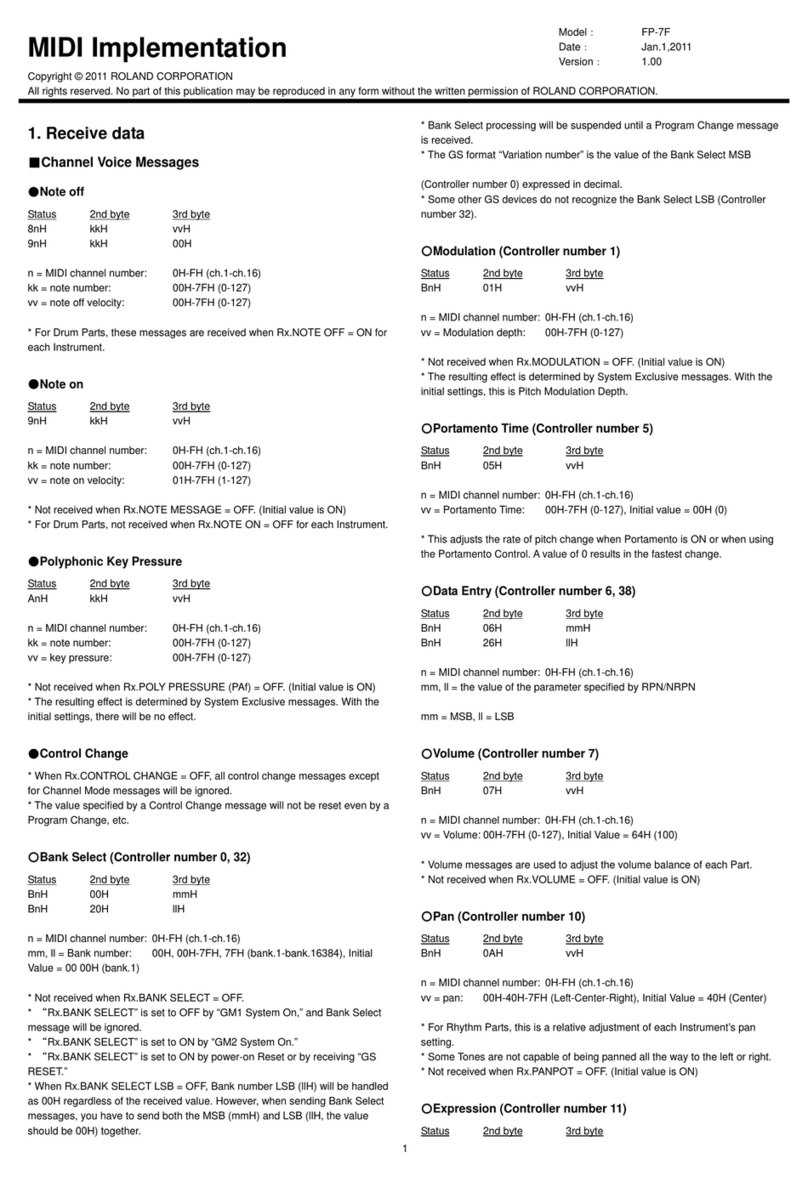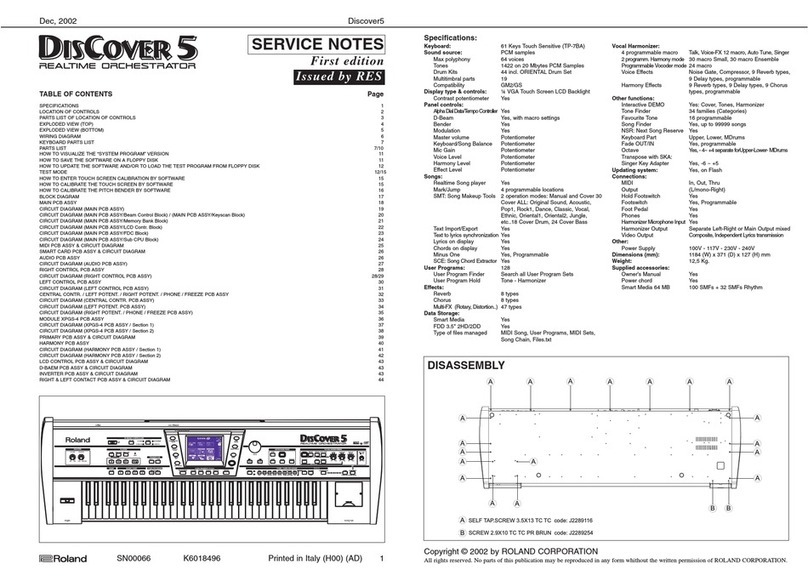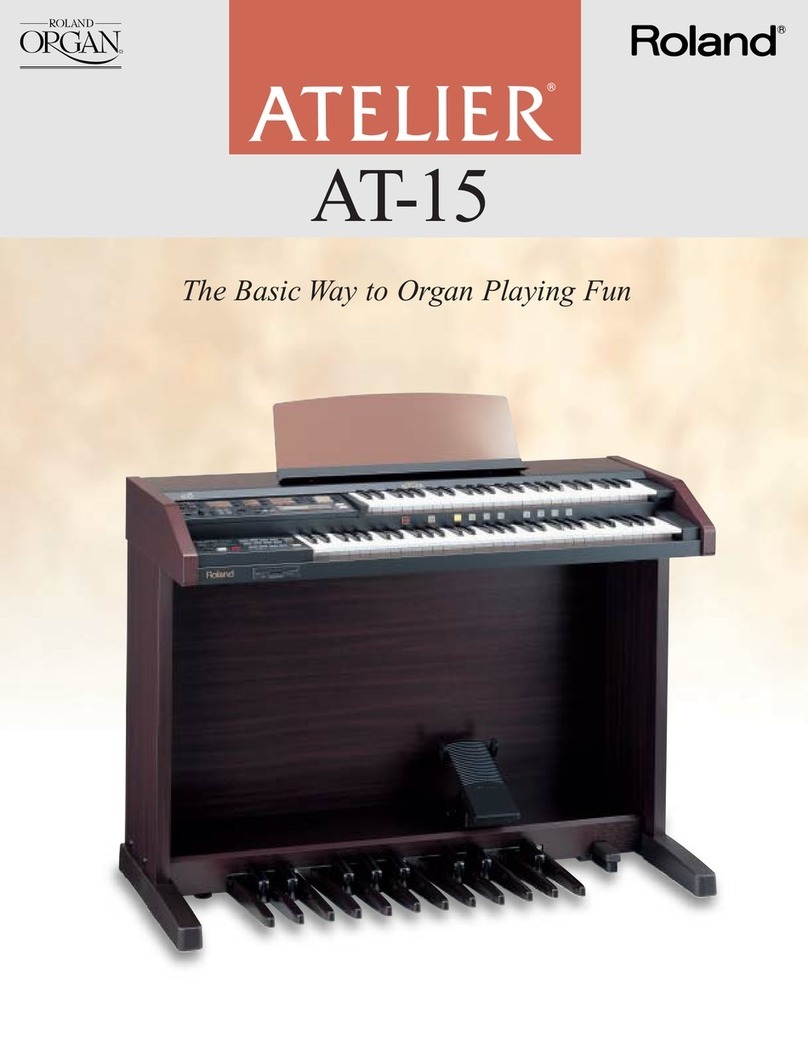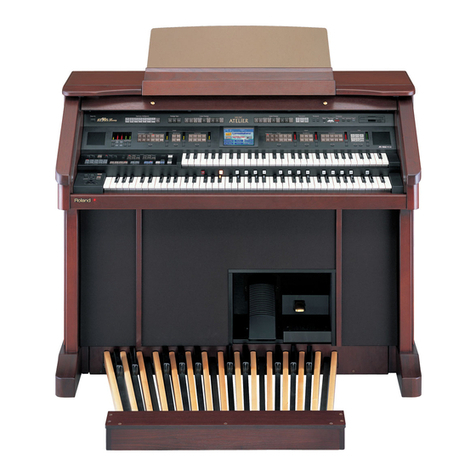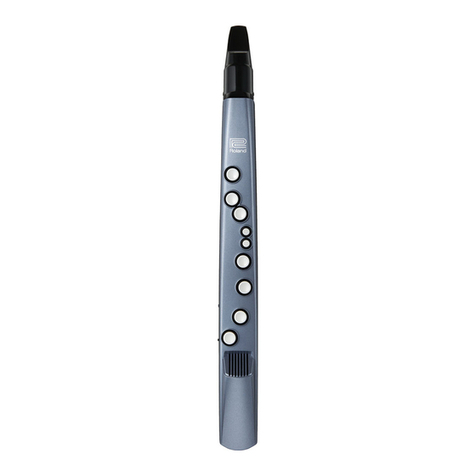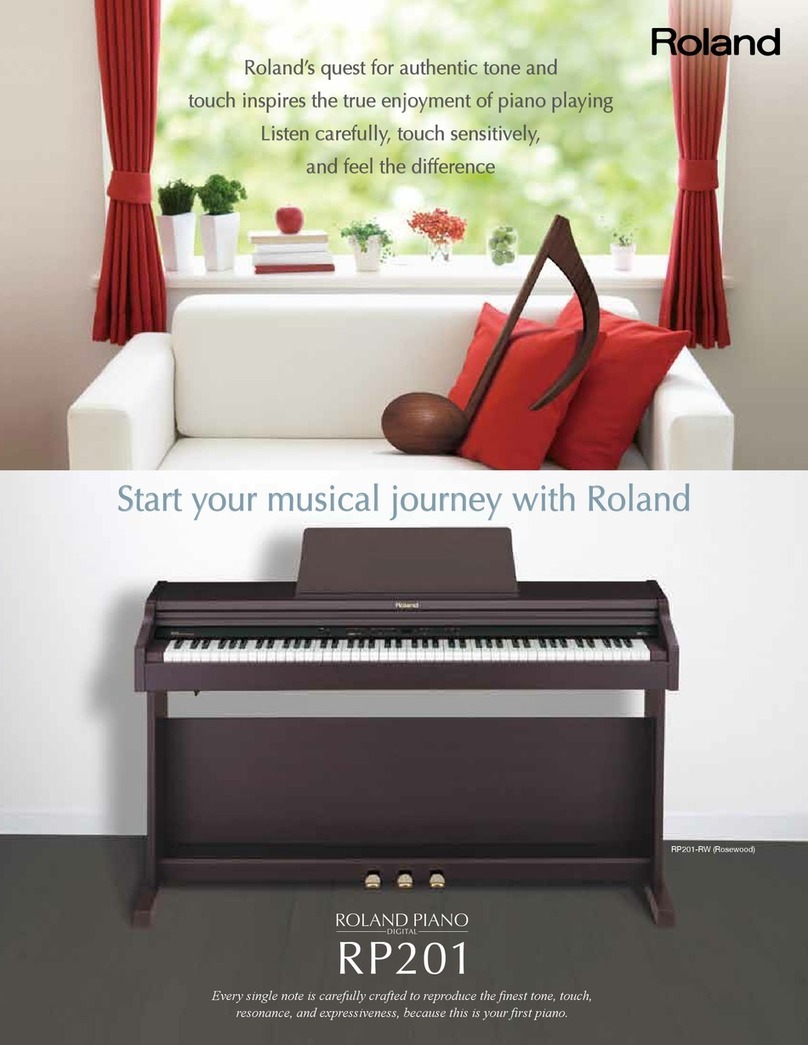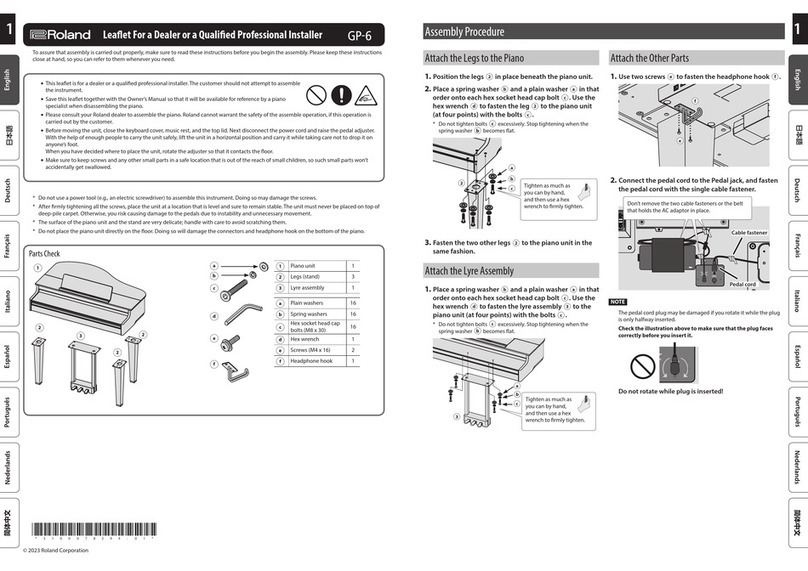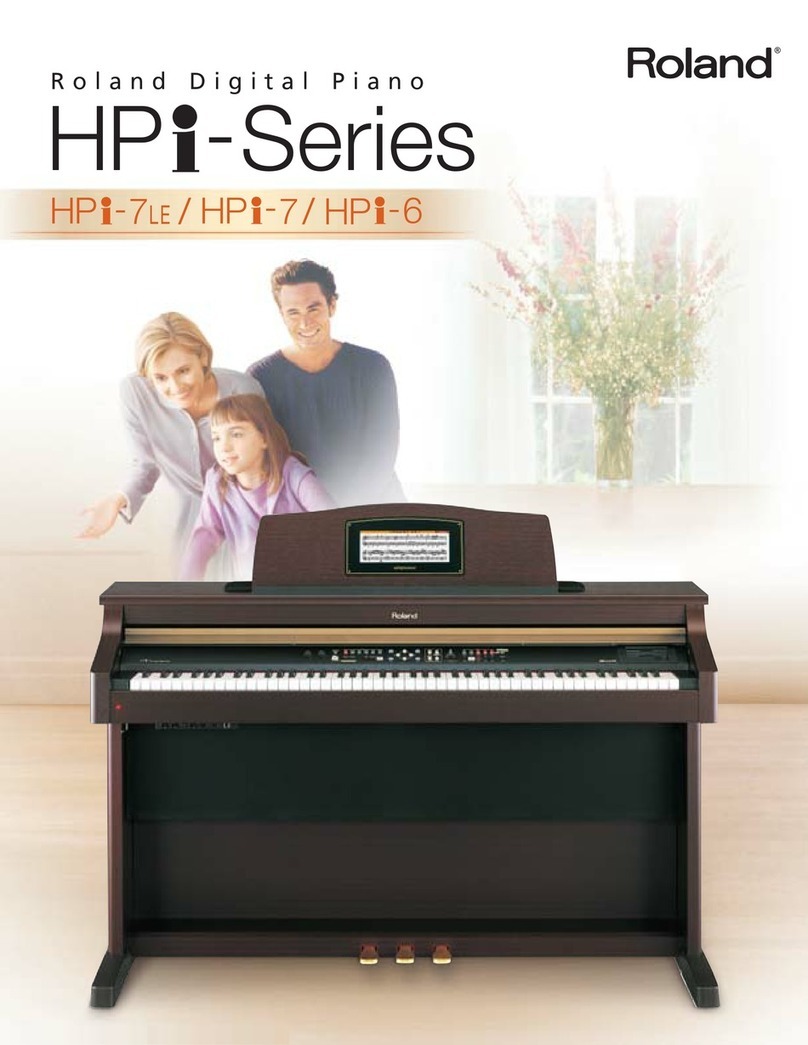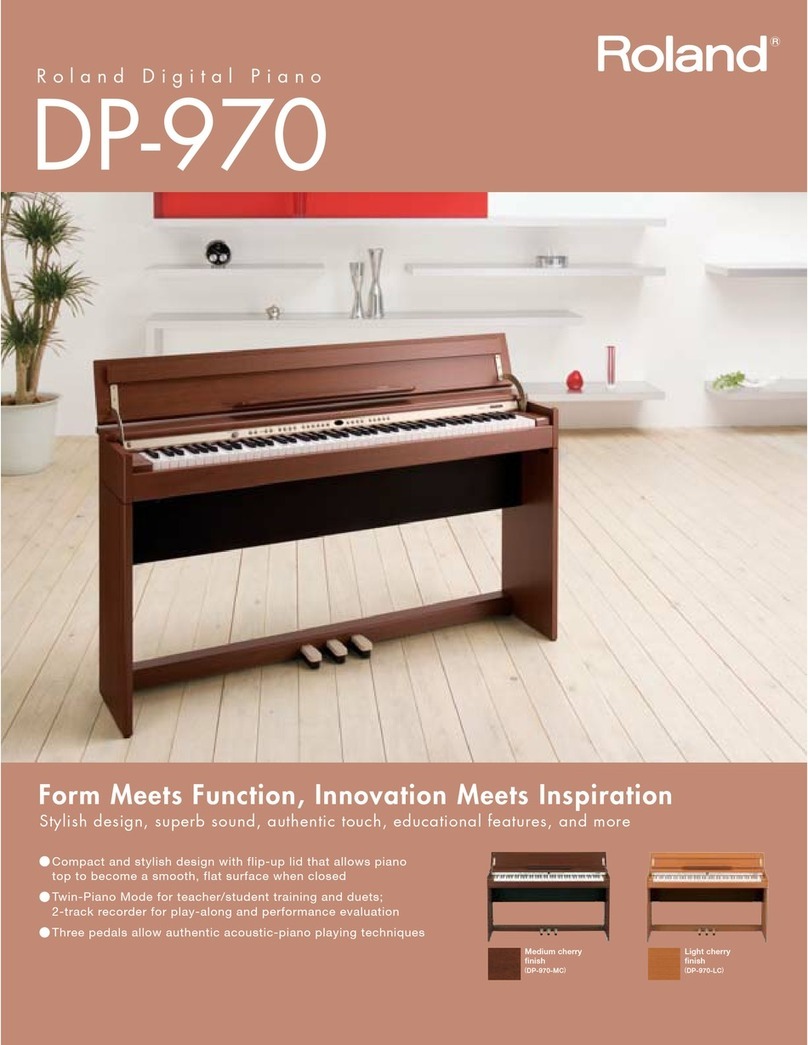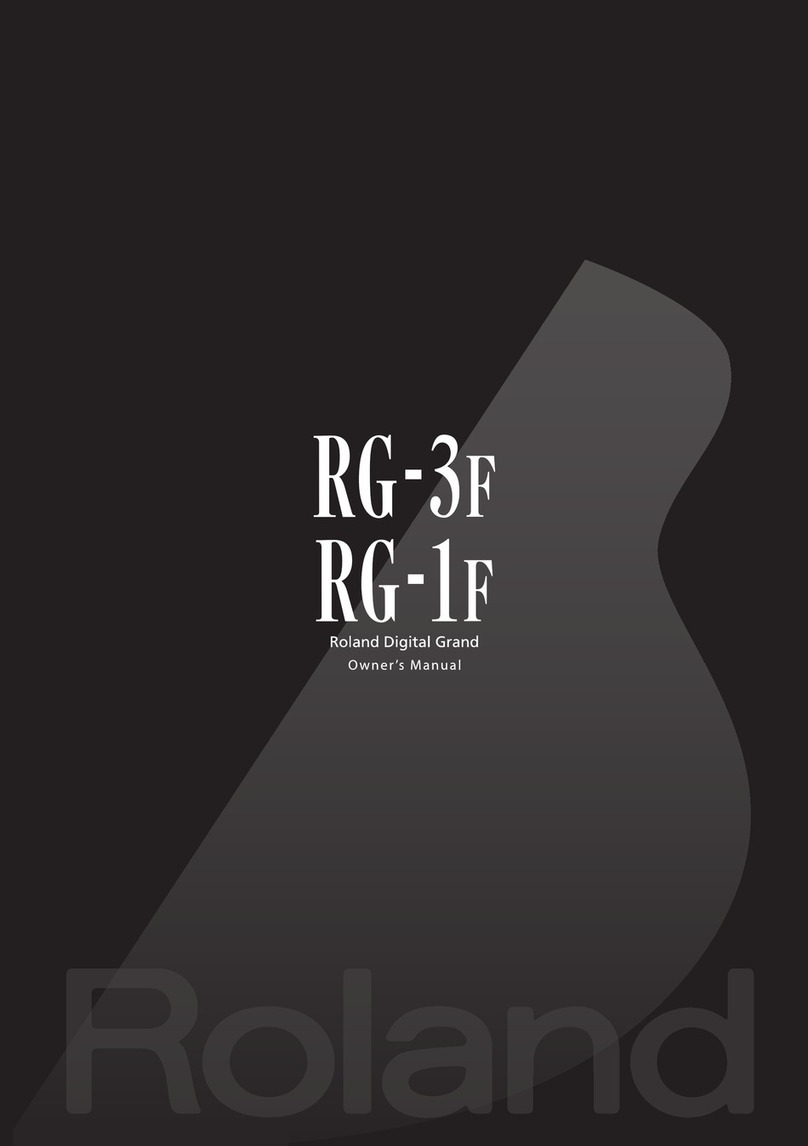
Important notes
6
r
KR111
Digital Intelligent Piano
1. Important notes
In addition to the items listed under “IMPORTANT SAFETY INSTRUCTIONS” and “Using the unit sa ely” on p. 3, please read
and observe the ollowing:
Power Supply
• Do not use this unit on the same po er circuit ith any device
that ill generate line noise (such as an electric motor or variable
lighting system).
• Before connecting the KR111 to other devices, turn off the po er
to all units. This ill help prevent malfunctions and/or damage to
speakers or other devices.
• Although the LCD and LEDs are s itched off hen the POWER
s itch is s itched off, this does not mean that the unit has been
completely disconnected from the source of po er. If you need to
turn off the po er completely, first turn off the
[Power¥On]
s itch, then unplug the po er cord from the po er outlet. For
this reason, the outlet into hich you choose to connect the
po er cord’s plug should be one that is ithin easy reach and
readily accessible.
Placement
• Using the unit near po er amplifiers (or other equipment contain-
ing large po er transformers) may induce hum. To alleviate the
problem, change the orientation of this unit; or move it farther
a ay from the source of interference.
• This device may interfere ith radio and television reception. Do
not use this device in the vicinity of such receivers.
• Noise may be produced if ireless communications devices, such
as cell phones, are operated in the vicinity of this unit. Such noise
could occur hen receiving or initiating a call, or hile conversing.
Should you experience such problems, you should relocate such
ireless devices so they are at a greater distance from this unit, or
s itch them off.
• Do not expose the unit to direct sunlight, place it near devices that
radiate heat, leave it inside an enclosed vehicle, or other ise sub-
ject it to temperature extremes. Also, do not allo lighting devices
that normally are used hile their light source is very close to the
unit (such as a piano light), or po erful spotlights to shine upon
the same area of the unit for extended periods of time. Excessive
heat can deform or discolor the unit.
• To avoid possible breakdo n, do not use the KR111 in a et area,
such as an area exposed to rain or other moisture.
• Do not allo rubber, vinyl, or similar materials to remain on the
KR111 for long periods of time. Such objects can discolor or other-
ise harmfully affect the finish.
• Do not put anything that contains ater (e.g., flo er vases) on the
piano. Also, avoid the use of insecticides, perfumes, alcohol, nail
polish, spray cans, etc., near the unit. S iftly ipe a ay any liquid
that spills on the unit using a dry, soft cloth.
• Do not allo objects to remain on the keyboard. This can be the
cause of malfunction, such as keys ceasing to produce sound.
• Do not paste stickers, decals, or the like to this instrument. Peeling
such matter off the instrument may damage the exterior finish.
Maintenance
• To clean the unit, use a dry, soft cloth; or one that is slightly
dampened. Try to ipe the entire surface using an equal amount
of strength, moving the cloth along ith the grain of the ood.
Rubbing too hard in the same area can damage the finish.
• Never use benzine, thinners, alcohol or solvents of any kind, to
avoid the possibility of discoloration and/or deformation.
• Brass eventually darkens as the result of the natural oxidation pro-
cess. If the brass becomes tarnished, polish it using commercially
available metal polisher.
Additional precautions
• Use a reasonable amount of care hen using the KR111’s buttons,
sliders, or other controls; and hen using its jacks and connectors.
Rough handling can lead to malfunctions.
• When connecting/disconnecting cables, grasp the connector
itself—never pull on the cable. This ay you ill avoid causing
shorts, or damage to the cable’s internal elements.
• A small amount of heat ill radiate from the unit during normal
operation.
• To avoid disturbing your neighbors, try to keep the unit’s volume
at reasonable levels. You may prefer to use headphones.
• When you need to transport the unit, pack it in shock-absorbent
material. Transporting the unit ithout doing so can cause it to
become scratched or damaged, and could lead to malfunction.
• Use a cable from Roland to make the connection. If using some
other make of connection cable, please note the follo ing precau-
tions.
• Some connection cables contain resistors. Do not use cables
that incorporate resistors for connecting to this unit. The use of
such cables can cause the sound level to be extremely lo , or
impossible to hear. For information on cable specifications, con-
tact the manufacturer of the cable.
Before using floppy disks
• Avoid using the KR111 immediately after it has been moved to a
location ith a significantly higher or lo er level of humidity.
Rapid changes in the environment can cause condensation to
form inside the drive, hich ill adversely affect the operation of
the drive and/or damage floppy disks. When the instrument has
been moved, s itch it on and ait at least one hour before using
the disk drive.
• To insert a disk, push it gently but firmly into the drive—it ill click
into place. To remove a disk, press the EJECT button.
• Never attempt to remove a floppy disk from the drive hile the
drive is operating (the indicator is brightly lit); damage could result
to both the disk and the drive.
• Remove any disk from the drive before po ering up or do n.
• To prevent damage to the disk drive’s heads, al ays try to hold the
floppy disk in a level position (not tilted in any direction) hile
inserting it into the drive.
• Floppy disks contain a plastic disk ith a thin magnetic coating.
Microscopic precision is required to enable storage of large
amounts of data on such a small surface area. To preserve their
integrity, please observe the follo ing hen handling floppy disks:
• Never touch the magnetic medium inside the disk.
• Do not use or store floppy disks in dirty or dusty areas.
• Do not subject floppy disks to temperature extremes (e.g., direct
sunlight in an enclosed vehicle). Recommended temperature
range: 10 to 50°C (50 to 122°F).
• Do not expose floppy disks to strong magnetic fields, such as those
generated by loudspeakers.
